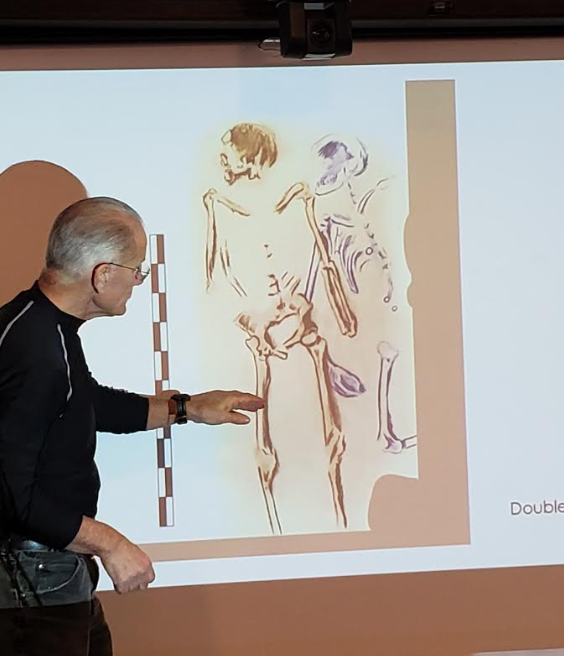
After the discovery of skeletal remains beneath an 18th Century Ridgefield home, Ridgefield Historical Society held a Press Conference on December 18 and introduced the media and community to a team of experts who are investigating what might be the first time in state history that soldiers from the Revolution have had their remains recovered from the field of battle.
On Friday, January 3, Quinnipiac University's Center for Medicine, Nursing and Health Science in North Haven began tests to learn more about the skeletal remains. According to the Journal-Register, the Quinnipiac team will use a suite of X-ray scanners to image the skeletons. After that, the skeletons will be handed off to Yale University for a more detailed analysis, possibly including DNA testing.
During the December 18 Press Conference, State Archaeologist Dr. Nicholas Bellantoni said he was 85% to 90% sure the skeletons were Revolutionary Soldiers. "We can’t say 100%, but every indication reflects that hypothesis and we have found nothing falsify that hypothesis,” said Bellantoni.
Bellantoni shared a composite sketch of the skeletons on December 18 saying, “I will not show you any skeletal remains out of respect for the soldiers. I don’t believe that is proper.”
The sketch showed two skeletons co-mingled, one on his back. The robust adult men are lying in an east-west orientation (customary of an 18th-century Christian burial) in-ground that Bellantoni says appears to be haphazardly dug. The two skeleton remains were not clothed.
A third skeleton found about 15 feet away from the co-mingled skeletons and approximately 5’11” in stature, was seemingly not stripped of his uniform as indicated by a series of buttons as well as a textile that was discovered in the shallow grave. “There were buttons from the neck to the abdomen,” said Bellantoni who added, “This individual appears to have 6 or 7 [18th century] buttons and at least one or two of them are pewter.” In addition to the buttons, a piece of textile was found next to the third skeleton which could be remnants of a shirt or a coat. “Getting that under a microscope to better understand where it may have come from in terms of a uniform,” said Bellantoni who added, “We have also found what appears to be leather in the upper neck area.” This piece of textile has not yet been analyzed. “We have a lot of analysis to do,” said Bellantoni.
This is a developing story. Please visit Ridgefield Historical Society online here for continued updates.